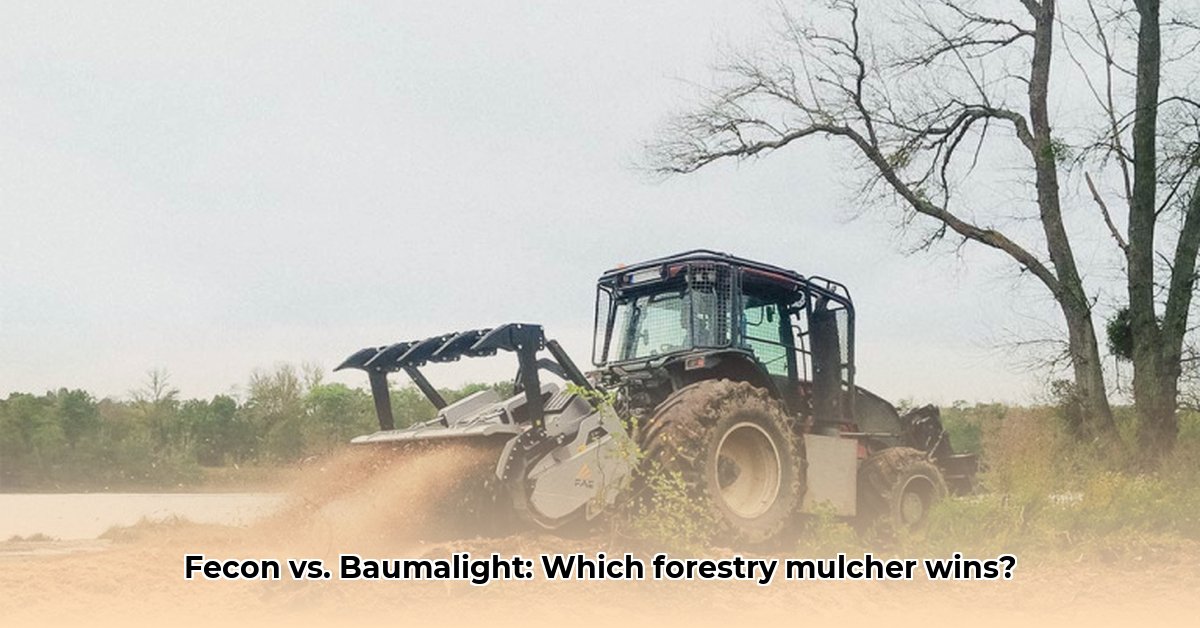
Choosing the right PTO-driven mulcher (a tractor attachment that shreds vegetation) significantly impacts land management efficiency and cost-effectiveness. This detailed comparison review analyzes two leading contenders: the Fecon Bull Hog and the Baumalight MP360, providing actionable insights for farmers, land managers, and contractors. For more information on tractor mulchers, check out this helpful resource.
Detailed Comparison: Fecon Bull Hog vs. Baumalight MP360
This section presents a comprehensive comparison based on gathered data – further research is needed to fully populate the specifications.
Specifications: A Head-to-Head Look
The following table summarizes key specifications. Further research from manufacturer data sheets is required to complete this table and ensure accuracy. This data is critical for informed decision-making.
| Feature | Fecon Bull Hog | Baumalight MP360 | Notes |
|---|---|---|---|
| Working Width (in) | To be determined | To be determined | Crucial for determining project suitability and efficiency. |
| Horsepower Required (hp) | To be determined | To be determined | Ensure your tractor has sufficient power; underpowering reduces efficiency. |
| Weight (lbs) | To be determined | To be determined | Impacts maneuverability, transport, and potential ground compaction. |
| Cutting Depth (in) | To be determined | To be determined | Determines the type and size of vegetation that can be effectively mulched. |
| Rotor Speed (RPM) | To be determined | To be determined | Affects cutting quality and efficiency. |
| PTO Requirements (hp) | To be determined | To be determined | Verify compatibility with your tractor's PTO output. |
| Fuel Consumption (gal/hr) | To be determined | To be determined | A major factor in operating costs. |
Performance: Real-World Capabilities
While both mulchers excel at vegetation management, their performance varies depending on the vegetation type and conditions. The Fecon Bull Hog's reputation is built on tackling dense brush and small trees. However, more precise data on cutting efficiency in various vegetation types (grass, brush, small trees) and operating speeds under different conditions are needed for a robust comparison. Independent testing results would provide valuable quantitative insights. How will the cutting efficiency differ in dense versus sparse vegetation for both machines?
Maintenance and Durability: Long-Term Costs
Maintenance ease and part accessibility are critical for minimizing downtime. Anecdotal evidence suggests the Baumalight MP360 might offer easier access for maintenance, potentially resulting in lower labor costs. Conversely, the robust Fecon Bull Hog may require less frequent maintenance, despite potentially more complex repair procedures. Detailed information on warranty details, parts availability, and common repair costs for each model is crucial. What is the average annual maintenance cost for each model based on independent user reports?
Cost Analysis: Initial Investment and Total Cost of Ownership
The purchase price is only one component of the total cost of ownership. Factor in fuel consumption, maintenance, repairs, and potential downtime. A comprehensive cost-benefit analysis considering the machine's lifespan is essential. A lower initial price doesn't guarantee lower long-term costs. Examining financing options, such as leasing, and calculating average hourly operating costs can provide valuable insights. What are the typical financing options and their associated costs for each machine?
Safety Features and Operational Considerations
Both mulchers present inherent safety risks due to powerful moving parts. Always use appropriate personal protective equipment (PPE), including hearing and eye protection, and follow manufacturer safety guidelines. Thorough operator training is essential. What specific safety features does each machine offer, and how effective are these features in reducing risks?
Suitability for Different Users
The best choice depends on individual needs and scale of operation.
Large-scale operations: The Fecon Bull Hog's robust design and high power output may be best suited for tackling large-scale clearing and heavy-duty mulching projects.
Small-scale operations: The Baumalight MP360's potentially higher maneuverability and fuel efficiency might be more appropriate for smaller projects or those requiring precise control.
Land managers and contractors: The choice depends on the diversity of projects. A contractor might benefit from having both models to handle diverse job requirements. A contractor might benefit from a fleet of machines to cater to different contracts. What is the optimal machine choice for a contractor specializing in clearing residential properties versus a contractor specializing in forestry right-of-way maintenance?
Conclusion: Choosing Your Ideal Mulcher
This comparison highlights the strengths of both mulchers. The Fecon Bull Hog excels in power and efficiency for large-scale operations, while the Baumalight MP360 offers maneuverability and potentially lower operating costs for smaller projects. The missing data points in this review prevent a definitive recommendation. Thorough additional research is needed before a conclusive recommendation can be made. Remember to prioritize safety and conduct a full cost-benefit analysis.